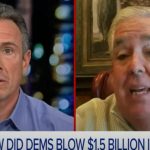Current and former Twitter employees began a class action lawsuit on Thursday concerning the current wave of high-profile layoffs at Twitter. The suit claims that the embattled social media company is in violation of labor laws, particularly federal and state versions of the Worker Adjustment and Retraining Notification (WARN) Act. The filing also notes that one plaintiff did not receive any severance pay.
Twitter, the suit claims, failed to give the legally required 60-day notice about impending job cuts to employees, as well as the California Employment Development Department, which was also supposed to be notified according to state law. But the suit may not end up before a judge and could be viewed less as a case for the courts, and more as a negotiating tactic aimed at protecting those who are subject to these layoffs, organized by a lawyer who has sued on behalf of Elon Musk’s former workers in the past.
A similar lawsuit against Tesla, where Musk is CEO, was moved out of the public eye and into arbitration on Friday. The round of layoffs at Tesla that led to the suit occurred back in June.
You’ll recall that Musk acquired the formerly publicly-traded company Twitter, Inc. last week after a drawn-out haggling process that lasted months. The finalization of that sale turned Twitter into the property of the world’s richest person. So on Thursday, Musk used the sudden, unilateral power he wields over his favorite toy to begin the process of liquidating the jobs of roughly 3,700 human people, or half the company.
Twitter founder and ex-CEO Jack Dorsey, for his part, seems eager to take on the blame for these layoffs instead of Musk. He tweeted on Saturday “I own the responsibility for why everyone is in this situation: I grew the company size too quickly. I apologize for that.”
Tweet may have been deleted
(opens in a new tab)
The lawyer organizing the suit, Shannon Liss-Riordan, told a local ABC News affiliate in Boston on Friday that this action was preemptive. She anticipated that workers were vulnerable to these alleged violations based on previous business practices around layoffs at Tesla, which are cited in the Twitter suit. Those layoffs, Liss-Riordan said, “were done without any notice.” She also claimed that Musk “is an employer who has a history of thumbing his nose at federal labor laws.”
At Tesla, Liss-Riordan claims, “Employees were immediately asked to sign away all of their rights for a week or two of severance pay, even though the federal and state WARN Act requires 60 days severance pay when there is a mass layoff,” she said.
This time around, Liss-Riordan told Bloomberg on Friday, Musk “is making an effort to comply” with the law. “I am pleased that Elon Musk learned something from the lawsuit we brought against him at Tesla,” she said.
Musk claims that everyone “exited” in this round of layoffs received an offer including “3 months of severance, which is 50% more than legally required.” But it’s not yet clear what sort of agreements laid-off employees have to sign in order to become the recipients of Musk’s generosity.
Tweet may have been deleted
(opens in a new tab)
According to The Washington Post, it appears employees are being subject to a practice called “pay in place of notice,” in order to stay roughly within the bounds of the law. Instead of warning them 60 or 90 days in advance that layoffs are coming, this plan pays them through 60 or 90 days and keeps them employed on paper for all that time, even though they’re not working anymore. But the Post also notes that according to The Labor Department, this actually still violates the law.
New York lawyer Misty Marris told the legal blog Law & Crime that citing the Tesla layoffs in the suit against a different company controlled by Musk is unusual. Also unusual, according to Marris, is a request in the suit for a court order requiring Twitter to advise laid-off employees of their rights under the WARN ACT.
“In general,” Marris further explained to Law & Crime, “there are clauses in severance agreements that give employees time to contemplate the severance agreement and also to assess that they fully read and understand the agreement.”
But far from being unusual, this round of layoffs itself appears to be in keeping with Musk’s established strategy for putting people out of work, and keeping the ensuing legal matters out of the actual courts. It worked when he did it at Tesla. Let’s see if it works again.







